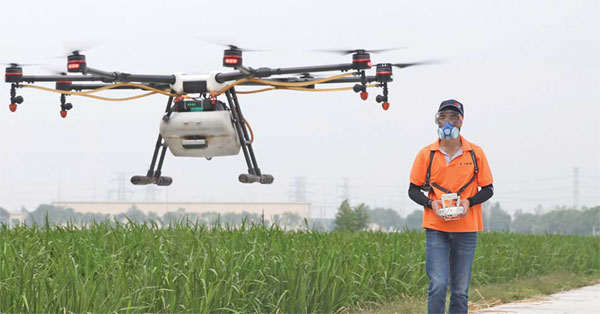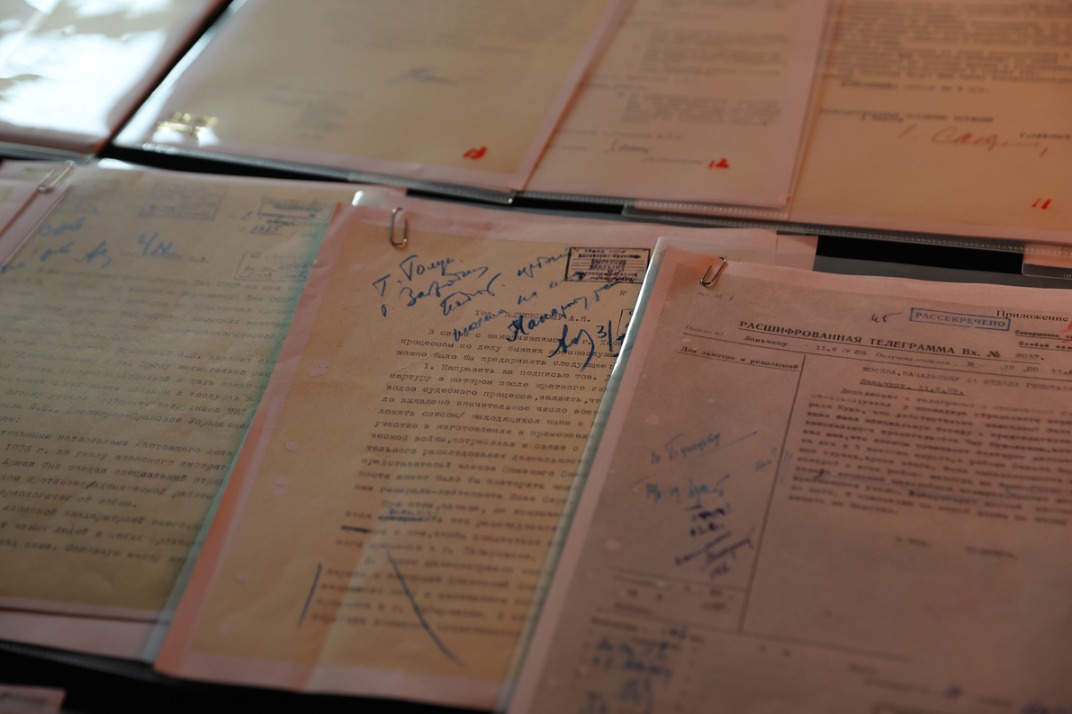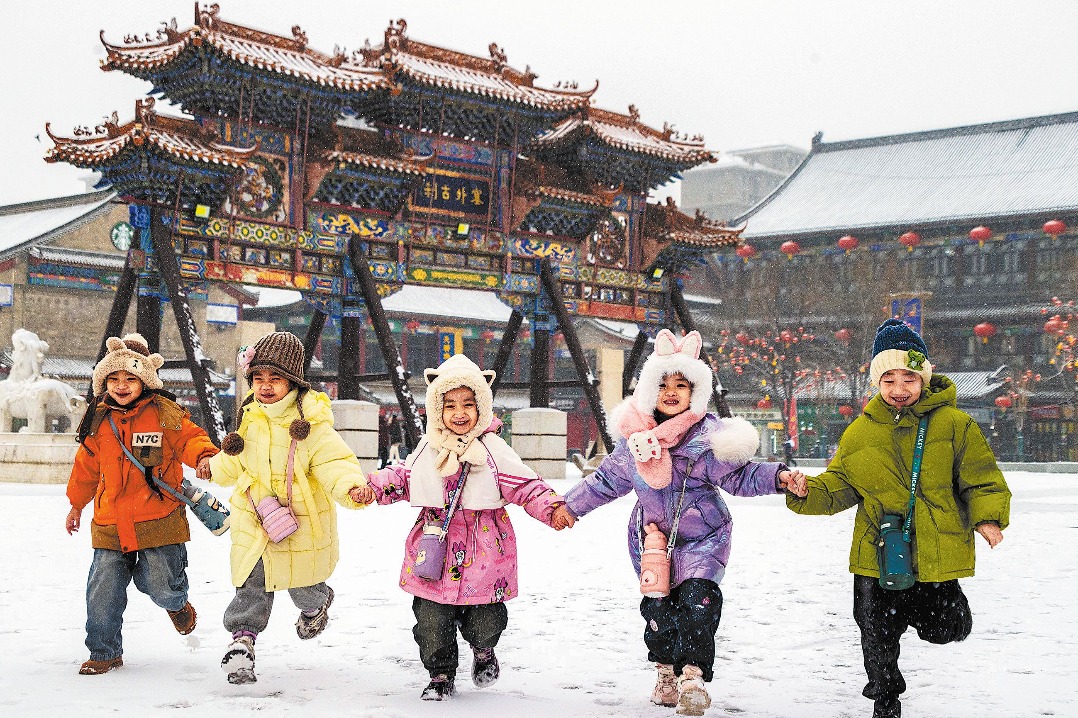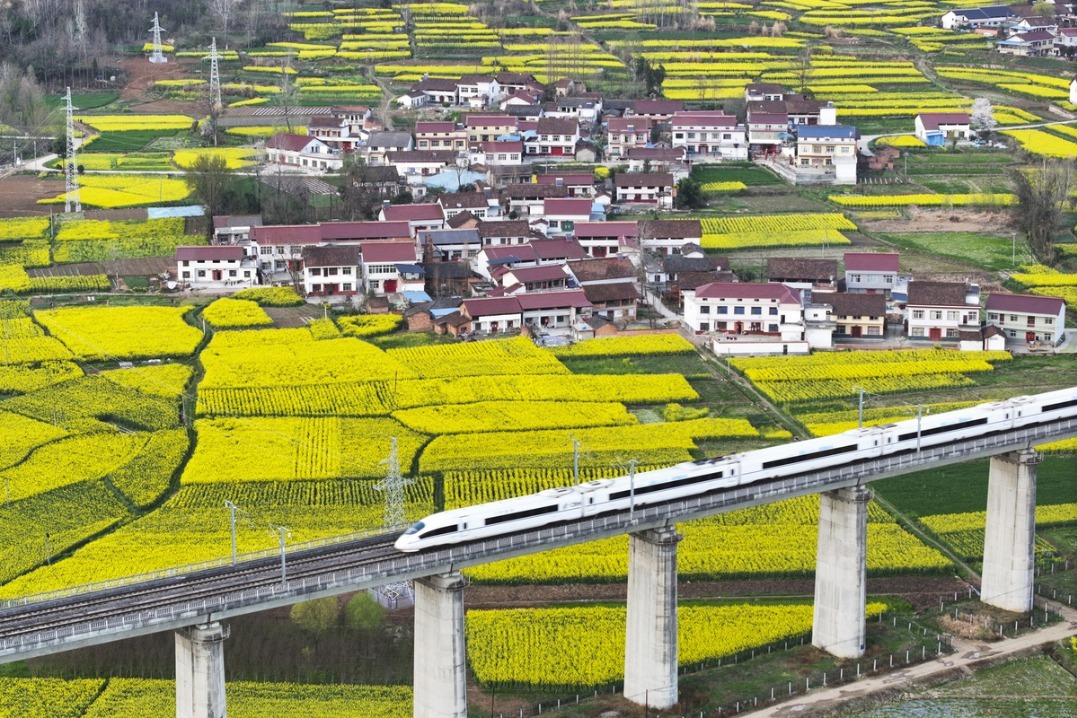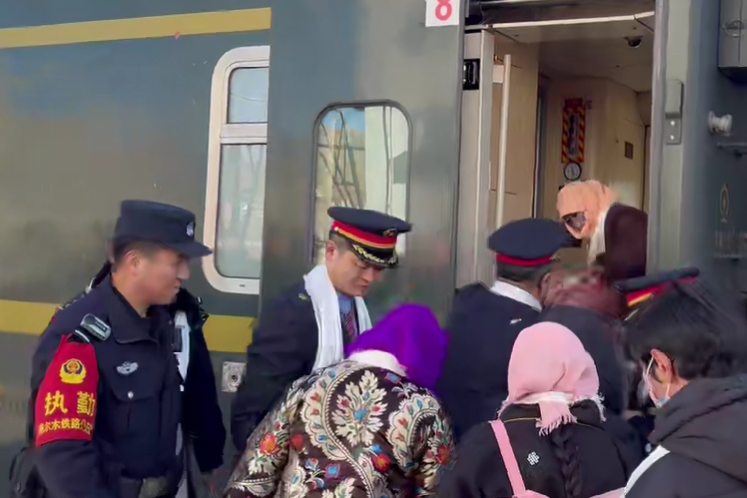Drones in the balance

In April last year, a drone loaded with flares and carrying a vial of radioactive material evaded security around the home and offices of the Japanese prime minister in Tokyo. Crashing onto the building's rooftop helipad, it sat for 13 days before being spotted.
Beyond the embarrassment of the authorities, the incident was used to highlight the country's perceived laxity in drone legislation.
No one was hurt and the operator - an anti-nuclear protester - was given a suspended sentence. But the Japanese parliament quickly passed laws placing strict restrictions on drones. Now, drones operated by members of the public are effectively banned within Japan's urban areas.
| A worker uses a drone produced by DJI to spray pesticide on fields in Shanghai. Ding Ding / Xinhua |
Until fairly recently, most countries around the globe lacked any laws covering unmanned aerial vehicles, or UAVs. The craft were usually flown by a small, niche community of hobbyists and engineers who normally kept to themselves.
Today the world of drones is a different place. With UAVs thrust into the marketplace as serious commercial tools - given their low cost, wide availability and ease of control - lawmakers have seen the need to bring pilots to heel.
But while such efforts may help rein in some irresponsible drone pilots, governments also want to boost drone innovation. Whether they can balance the two objectives with a comprehensive legal response to UAVs that is open enough to adapt to new advances and applications has become a serious question.
If regulatory frameworks can serve as a scaffold to protect both operators and the public, they will benefit both the industry and society, says Karan Girotra, a professor of technology and operations management at business school INSEAD in Singapore.
"A good open, innovation-encouraging, regulatory framework that continues to evolve with technology is necessary to the growth of this industry," he says.
"Lack of regulation can, in fact, be dangerous, as a few bad operators or technologies can turn public opinion against this very promising technology."
In the United States, only four months before the Tokyo incident, a Defense Department employee crashed a drone onto the lawn of the White House, leading to the tightening of rules on drones in Washington, DC.
One incident in Beijing in 2013 saw troops and aircraft deployed in response to a drone overflying sensitive parts of the city. The UAV was eventually shot down.
Even if radioactive drones or crash landings on government property are not an everyday occurrence, there are still the more mundane issues of privacy and public safety to contend with.
For example, while Hong Kong's Civil Aviation Department has introduced rules on where and when to fly, last year the special administrative region's privacy commissioner for personal data was reportedly looking into updating guidelines on what camera-carrying drones can film and store.
It is quite likely that some drone pilots have unwittingly breached privacy laws.
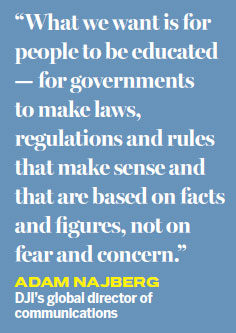
The Civil Aviation Administration of China has regulated that the Aircraft Owners and Pilots Association of China is in charge of the qualification management of drone pilots. If the drones are heavier than 7 kilometers, or fly over 120 meters high or fly a distance more than 500 meters away, the operator needs to have a license issued after passing the AOPA test. Before flying, they need to report to the local air traffic control department and get permission.
But Wang Boxue, a senior researcher of the Aviation Development Research Center of China, says that at present in China, the laws, regulations, and industry standards on supervision on the use and flying of drones are incomplete.
"The Civil Aviation Administration of China has not officially released regulations on drones, and the supervision system is unclear. Moreover, the current drone operators' examinations involve complicated procedures and is costly, resulting in the phenomenon that many people operate drones without a license," he says.
Recognizing the problems in allowing drones to wander free, but also wanting to preempt or at least offer alternatives to strict official legislation that may affect business, some companies have introduced "geofencing".
These are software and hardware systems that check a drone's location, mapping it against no-fly zones such as power plants, prisons and airports. Switching off these no-fly zones often requires registering with the drone's manufacturer.
Drone maker DJI - or Da-Jiang Innovations Science and Technology - headquartered in Shenzhen, Guangdong province, has been using GEO (geospatial environment online) technology for the past three years.
Some have praised GEO's ability to stop drones flying near airstrips or crowded sports stadiums. But others have complained it inhibits professional pilots from doing their jobs, that the system unfairly alters an already purchased product and that it collects pilot and drone data when unlocking geofenced zones.
"A lot of people feel a lot of different things about this," says Adam Najberg, DJI's global director of communications. When their market is small, "a lot of hobbyists might feel they don't want to have any rules or regulations".
"What we want is for people to be educated - for governments to make laws, regulations and rules that make sense and that are based on facts and figures, not on fear and concern."
Najberg uses the aviation industry of the 1970s as an example - calling it a period with a "jumble of rules and regulations", where different procedures were required for jetliners traveling even between neighboring countries.
Since then, the world has introduced global conventions to create a relatively streamlined international air transport regime.
"You have to understand the aviation industry was able to harmonize regulations," Najberg said. "And that made the world better."
Contact the writers at anthony@chinadailyapac.com and chenyingqun@chinadaily.com.cn
(China Daily Africa Weekly 11/18/2016 page7)
Today's Top News
- Philippines' provocations will avail it nothing: China Daily editorial
- China steps up financial support to spur consumption
- China marks milestone in developing complex deepwater oil and gas reservoirs
- China remembers victims of Nanjing Massacre, 88 years on
- New plan will be a road map for a stronger future
- Taiwan's character of the year a vote against confrontation
















